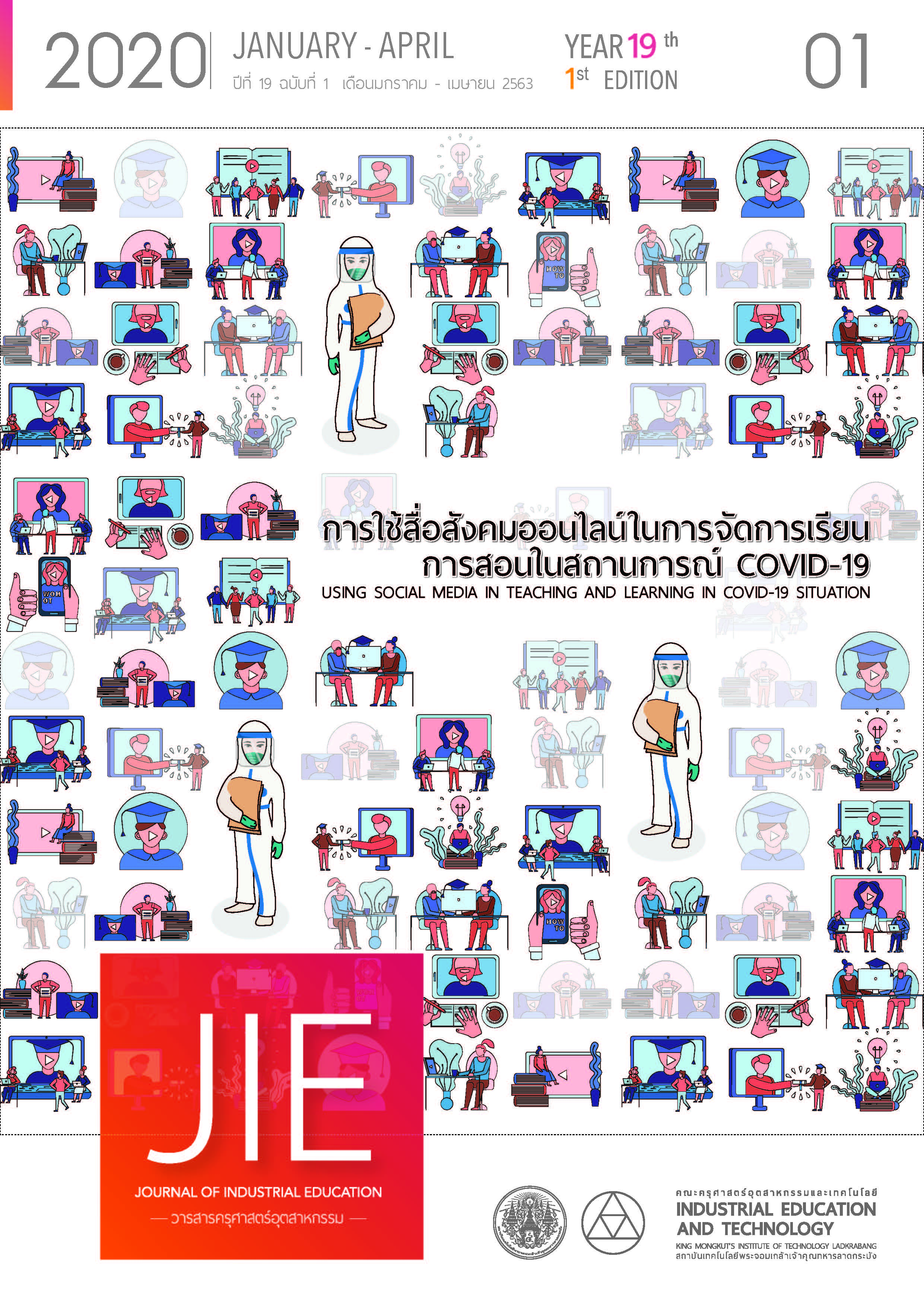THE ARCHITECTURE OF INTERNATIONAL RELATIONS INFORMATION MANAGEMENT SYSTEM USING CLOUD COMPUTING TECHNOLOGY TO PROMOTE WORLD UNIVERSITY RANKINGS
Keywords:
International Relations, Information Management System, Cloud Computing Technology, World University RankingAbstract
The research aims: 1) to analyze and synthesize the conceptual framework the architecture of International Relations Information Management System using Cloud Computing Technology to Promote World University Rankings, 2) to design the architecture of International Relations Information Management System using Cloud Computing Technology to Promote World University Rankings, 3) to develop the architecture of International Relations Information Management System using Cloud Computing Technology to Promote World University Rankings, and 4) to evaluation the satisfaction on developing the architecture of International Relations Information Management System using Cloud Computing Technology to Promote World University Rankings. The instruments of this research were 1) the conceptual framework the architecture of International Relations Information Management System using Cloud Computing Technology to Promote World University Rankings, 2) the architecture of International Relations Information Management System using Cloud Computing Technology to Promote World University Rankings, and 3) the evaluation the satisfaction on developing the architecture of International Relations Information Management System using Cloud Computing Technology to Promote World University Rankings. The results of the research found that: 1) the developed architecture of International Relations Information Management System using Cloud Computing Technology to Promote World University Rankings consists of 5 parts: (1.1) Stakeholders, (1.2) International Information, (1.3) International Relations Information Management System, (1.4) Private Cloud, and (1.5) World University Rankings; and 2) the suitability evaluation result on the developed architecture of International Relations Information Management System using Cloud Computing Technology to Promote World University Rankings found that (2.1) the overall composition on the architecture of International Relations Information Management System using Cloud Computing Technology to Promote World University Rankings is at the highest level (= 4.60, S.D.= 0.55), (2.2) for the suitability of classified composition, the composition of stakeholders was at the highest suitability level (
= 4.73, S.D.= 0.45), International Information was also at the highest suitability level (
= 4.83, S.D.= 0.38), International Relations Information Management System was at the highest suitability level (
= 4.80, S.D.= 0.42), Private Cloud was at the highest suitability level (
= 4.50, S.D.= 0.56), and the composition of World University Rankings was at the highest suitability level (
= 4.90, S.D.= 0.32); and (2.3) the implementation of the architecture of International Relations Information Management System using Cloud Computing Technology to Promote World University Rankings was at the highest level (
= 4.62, S.D.= 0.43).
References
P Nilsook, J Jitsupa (2017) Information and Communication Technology Administration for Education. Bangkok : KMUTNB Textbook Publishing Center.
Wiwat Meesuwan. (2014). Cloud Computing for Education. Journal of education Naresuan University, 16(1), P. 149-157.
T. Sukdao. (2017). Analysis of the Media King Mongkut's Institute of Technology Ladkrabang with University Rankings Using the Webometrics. RMUTP Research Journal Humanities and Social Sciences., 2(1), P. 85-91.
Robert, M. R., Alan, D. & Barbara H. W., (2013). System Analysis and Design (5th ed). Hoboken: John Wiley & Sons, Inc.
SI-UK. (2017) Get to know QS World University Rankings. Retrieved August 8, 2019, from https://www.siuk-thailand.com/study-guide/qs-world-university-Rankings-introduction/
SI-UK. (2017) Get to know THE World University Rankings. Retrieved August 8, 2019, from https://www.siuk-thailand.com/study-guide/times-higher-education/
R. Jeansuti, S. Sikkhabandit, P. Tantaswong. (2018). The Information System Management Model for Educational Profession Services of the Teachers’ Council of Thailand Consistent with Thailand 4.0. Veridian E-Journal, Silpakorn University, 11(3), P. 572-588.
A. Thasuthorn. (2018). Cultural Diplomacy : Thailand's Foreign Policy to Indochina, the Neighboring Countries. Journal of Politics and Governance, 8(3), P. 192-206.
P. Kanasutra. (1995). Statistics for Research in the Behavioral Sciences. Bangkok: Chulalongkorn University Press. 130
P. Chatwattana. (2017). The Effect of Web-based Learning System using Project-based Learning of Imagineering to Enhance Creative Construction of Multimedia Skills and Cooperative Skills. Journal of Industrial Education, 16(1), P. 192-201.
P. Thammachoto, K. Sriprasertpap, G. Boriboon, C. Boonwatthanakul. (2017). Information Systems Management Model for supporting the Learning. Veridian E-Journal, Silpakorn University, 10(2), P. 79-96.
P. Makpoonpol, T.Sovajassatakul, P. Tungkunanan. (2015). Development of Information System for Student's Dormitory Admission for the Department of Student Affairs, King Mongkut's Institute of Technology Ladkrabang. Journal of Industrial Education, 14(2), P. 244-251.
S. Pitiyasak. (2018). Cloud Computing Policy and Personal Data Protection in the Cloud among the European Union, the United States, Australia and ASEAN : A Thailand Perspective. STOU Journal, 31(2), P. 25-43.
S. Tuntiwongwanich. (2017). Development of Web Information Technology of Faculty of Industrial Education in King Mongkut's Institute of Technology Ladkrabang. Journal of Industrial Education, 16(1), P. 202-209.
C. Saejueng. (2019). Cloud Enterprise Resource Planning. Business Review, 11(1), P. 243-261. 131
Downloads
Published
How to Cite
Issue
Section
License
"The opinions and contents including the words in papers are responsibility by the authors."
"ข้อคิดเห็น เนื้อหา รวมทั้งการใช้ภาษาในบทความถือเป็นความรับผิดชอบของผู้เขียน"



